- シンクタンクならニッセイ基礎研究所 >
- 経営・ビジネス >
- 雇用・人事管理 >
- Future Issues of Indefinite Employment Reclassification Rule - Learning from the Precedent in South Korea -
Future Issues of Indefinite Employment Reclassification Rule - Learning from the Precedent in South Korea -

生活研究部 上席研究員・ヘルスケアリサーチセンター・ジェロントロジー推進室兼任 金 明中
文字サイズ
- 小
- 中
- 大
In both Japan as well as South Korea, the increase in non-regular workers can be observed as a long-term trend. In Japan, the cabinet decided on a plan to continue regulatory relaxation in 1997 that incorporated liberalization of temporary labor, and temporary labor was effectively liberalized in 1999. This spurred the increase of non-regular workers and further diversified the modes of employment available. In South Korea, the number of non-regular workers began increasing after the IMF economic crisis in 1997. For both Japan and South Korea, employment destabilization continues.
In 2007, as the increase in non-regular workers accelerated, the South Korean government implemented the “Act on the Protection of Non-Regular Workers.” The purpose of the law known was as “In acknowledgement of the diversification of the labor marketplace, to limit the time period of fixed-term and part-time worker employment in order to restrict abuse of irregular employees and rectify unreasonable discrimination against irregular employees.” The result was that employees who worked at the same workplace for more than two years would be treated as contractual employees for an indefinite contractual period.
In this paper we discuss the current status of non-regular workers in Japan and South Korea in addition to both countries’ governmental stance on this issue is referred. First, based on several studies conducted in both countries, we contrast and analyze the different definitions of “non-regular workers” used in Japan and South Korea. Then we explore measures to address non-regular workers in both countries. In particular, by analyzing the issues surrounding the implementation of South Korea’s “Act on the Protection of Non-Regular Workers,” which introduced the indefinite employment reclassification rule not yet seen in Japan, we seek to discuss what kind of indefinite employment reclassification rule Japan should pursue in the future.
1 Myoung-Jung KIM: Associate Research Fellow, Social Improvement & Life Design Research Department, Healthcare Research Center, Gerontorogy Promotion Office NLI Research Institute, Tokyo, Japan.
Machiko Osawa: Professor, Japan Women's University, Tokyo, Japan.
The definition of non-regular employee is one of the important factor when we compare the actual condition of them cross-nationally. The actual condition, however, is not totally same even if the name is same because structure of the labor market, form and scale of the development and industrial relationship vary depending on each country. Also, non-regular employee has not been defined apparently not yet. But, Japan and South Korea define it in some ways to grasp the actual condition, so next, we will discuss further on them.
Initially, Japanese survey distinguishes non-employee by means of “contract period of labor (hereinafter called a position at work)” and “internal name at work (hereinafter called employment system)” Based on a position at work, “a temporary employee” who is employed with contract with fixed term between a month and a year and “daily employee” employed with contract with fixed term less than a month are regarded as non-regular employee. Meanwhile, “internal name at work” based divides it into seven parts depending on the name at the work such as regular employee, part-time worker, casual staff, dispatched employee, contracted employee, fixed-term employee and others, and treats the six parts except regular employee as non-regular employee and staff.
However, the difference of the definitions affects big gap of regular employee rates. In 2017, a rate of non-regular employee based on the position at work is 7.1 % which is far below that based on the employment system, 37.3%. It can be said that changes of Labor force survey`s agenda caused significant decrease in a rate of non-regular employee based on the position at work (13.8%-8.5% 2012-2013).
Labor force survey newly divides a position of work into “permanent work (an indefinite contract)” and “permanent work (a definite contract)”, therefore, it can be explained that the respondents who answered “a temporary employee” as far answered “permanent work (a definite contract)” in the new survey and, it reduced the number of “a temporary employee” and it increased permanent work (a definite contract) at the same time.
Although a rate of non-regular employee based on a position at work had not changed dramatically from 80’s to 90’s, it increased to up to 14% after then, however, it has been decreasing since 2013. On the other hand, a rate of non-regular employee based on employment system has been increasing since 80’s even now. Kambayashi (2013) focuses on the difference of time-series trend of increase in non-regular employee and says that the difference of the definition of non-regular employee is not only problems of statistic measurement and academic sentences but key issues which is intimately connected with the role played by non-regular employee in labor market.
In South Korea, the argument how to define non-regular employee among government, labor union and researchers still underway. The tripartite committee convening a committee called “The special committee for non-regular employee” in July 2002 because of an intensifying dispute over the concept and range of non-regular employee after IMF economic crisis, and they finally came to an agreement on classification standard based on employment system. This agreement expanded the extent of non-regular employee to include contingent employees and temporary workers which is based on sustainability of labor, part-time workers based on labor time and atypical worker such as dispatched workers, subcontract workers, specially hired service providers and Family workers.
However, a ratio of non-regular employment which is announced by researchers still has a big gap despite the integration of concept of non-regular employment due to the standard established by the special committee for non-regular employment. Although both the government and labor union are tally based on “The Economically Active Population Survey” conducted by Korea National Statistical Office. However why the rate differs?
For one of the reason, government statistics define non-regular employment as those who contracts with fixed-term based on (1)contract term (indefinite or definite), (2)labor time a day (full-time or part-time), (3)relationship of contract (direct hire, indirect hire or a sole proprietor), works with short-time, contracts with more than three people and works as dispatched workers、specially hired service providers、and family workers. In contrast, statistics of labor union include regular contingent and regular daily workers distinguished by The Economically Active Population Survey adding to non-regular employment defined by government statistics.
Government statistics calculate regular workers as workers excluding non-regular workers. But, the labor union treats both workers without social insurance and workers with less sustainability of their workplace (regular temporary workers and regular day employees in Table 1) as non-regular workers.
Kim Yusun (2008) states that “long-term temporary workers” who has got anxiety of their job like a risk that they can be fired and termination of their contract even if they have already been working more than a year and they expect that they can work more than a year, constitute a vital portion of non-regular employment in South Korea. According to Table 2, the number of non-regular employee reached 3 million and 414 thousand in August July, so the rate by labor union goes below that by government statistics when we recalculate by adding this fugue by labor union`s estimate to regular employee that lessen the rate of non-regular employee from 42.4% to 25.2%.
(2019年03月26日「基礎研レポート」)

生活研究部 上席研究員・ヘルスケアリサーチセンター・ジェロントロジー推進室兼任
金 明中 (きむ みょんじゅん)
研究・専門分野
高齢者雇用、不安定労働、働き方改革、貧困・格差、日韓社会政策比較、日韓経済比較、人的資源管理、基礎統計
03-3512-1825
- プロフィール
【職歴】
独立行政法人労働政策研究・研修機構アシスタント・フェロー、日本経済研究センター研究員を経て、2008年9月ニッセイ基礎研究所へ、2023年7月から現職
・2011年~ 日本女子大学非常勤講師
・2015年~ 日本女子大学現代女性キャリア研究所特任研究員
・2021年~ 横浜市立大学非常勤講師
・2021年~ 専修大学非常勤講師
・2021年~ 日本大学非常勤講師
・2022年~ 亜細亜大学都市創造学部特任准教授
・2022年~ 慶應義塾大学非常勤講師
・2019年 労働政策研究会議準備委員会準備委員
東アジア経済経営学会理事
・2021年 第36回韓日経済経営国際学術大会準備委員会準備委員
【加入団体等】
・日本経済学会
・日本労務学会
・社会政策学会
・日本労使関係研究協会
・東アジア経済経営学会
・現代韓国朝鮮学会
・博士(慶應義塾大学、商学)
金 明中のレポート
| 日付 | タイトル | 執筆者 | 媒体 |
|---|---|---|---|
| 2025/07/08 | 「静かな退職」と「カタツムリ女子」の台頭-ハッスルカルチャーからの脱却と新しい働き方のかたち | 金 明中 | 基礎研マンスリー |
| 2025/06/06 | “サヨナラ”もプロに任せる時代-急増する退職代行サービス利用の背景とは? | 金 明中 | 基礎研マンスリー |
| 2025/06/02 | 日韓カップルの増加は少子化に歯止めをかけるか? | 金 明中 | 研究員の眼 |
| 2025/05/22 | 【アジア・新興国】韓国の生命保険市場の現状-2023年のデータを中心に- | 金 明中 | 保険・年金フォーカス |
新着記事
-
2025年11月04日
今週のレポート・コラムまとめ【10/28-10/31発行分】 -
2025年10月31日
交流を広げるだけでは届かない-関係人口・二地域居住に求められる「心の安全・安心」と今後の道筋 -
2025年10月31日
ECB政策理事会-3会合連続となる全会一致の据え置き決定 -
2025年10月31日
2025年7-9月期の実質GDP~前期比▲0.7%(年率▲2.7%)を予測~ -
2025年10月31日
保険型投資商品の特徴を理解すること(欧州)-欧州保険協会の解説文書
お知らせ
-
2025年07月01日
News Release
-
2025年06月06日
News Release
-
2025年04月02日
News Release
【Future Issues of Indefinite Employment Reclassification Rule - Learning from the Precedent in South Korea -】【シンクタンク】ニッセイ基礎研究所は、保険・年金・社会保障、経済・金融・不動産、暮らし・高齢社会、経営・ビジネスなどの各専門領域の研究員を抱え、様々な情報提供を行っています。
Future Issues of Indefinite Employment Reclassification Rule - Learning from the Precedent in South Korea -のレポート Topへ

















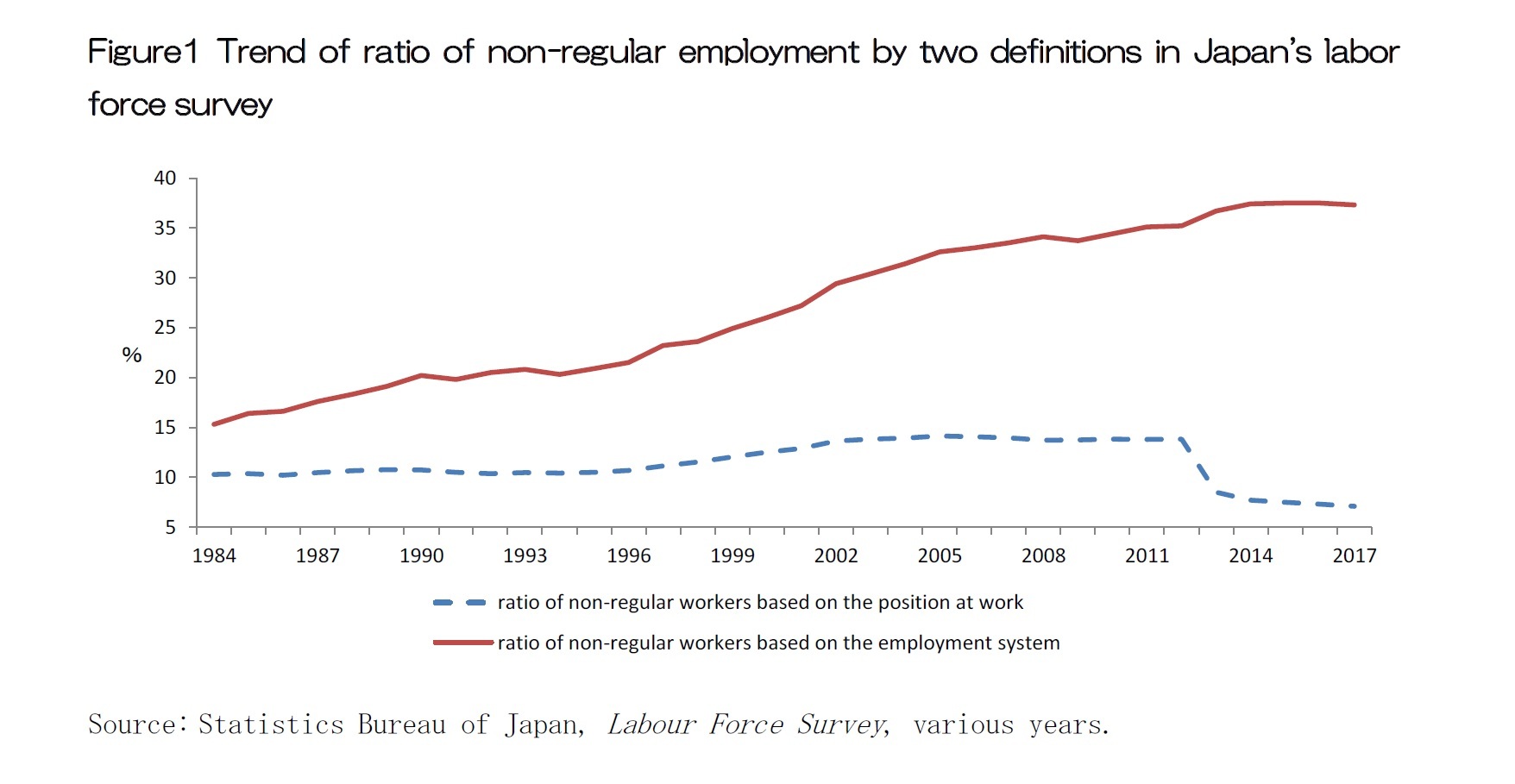
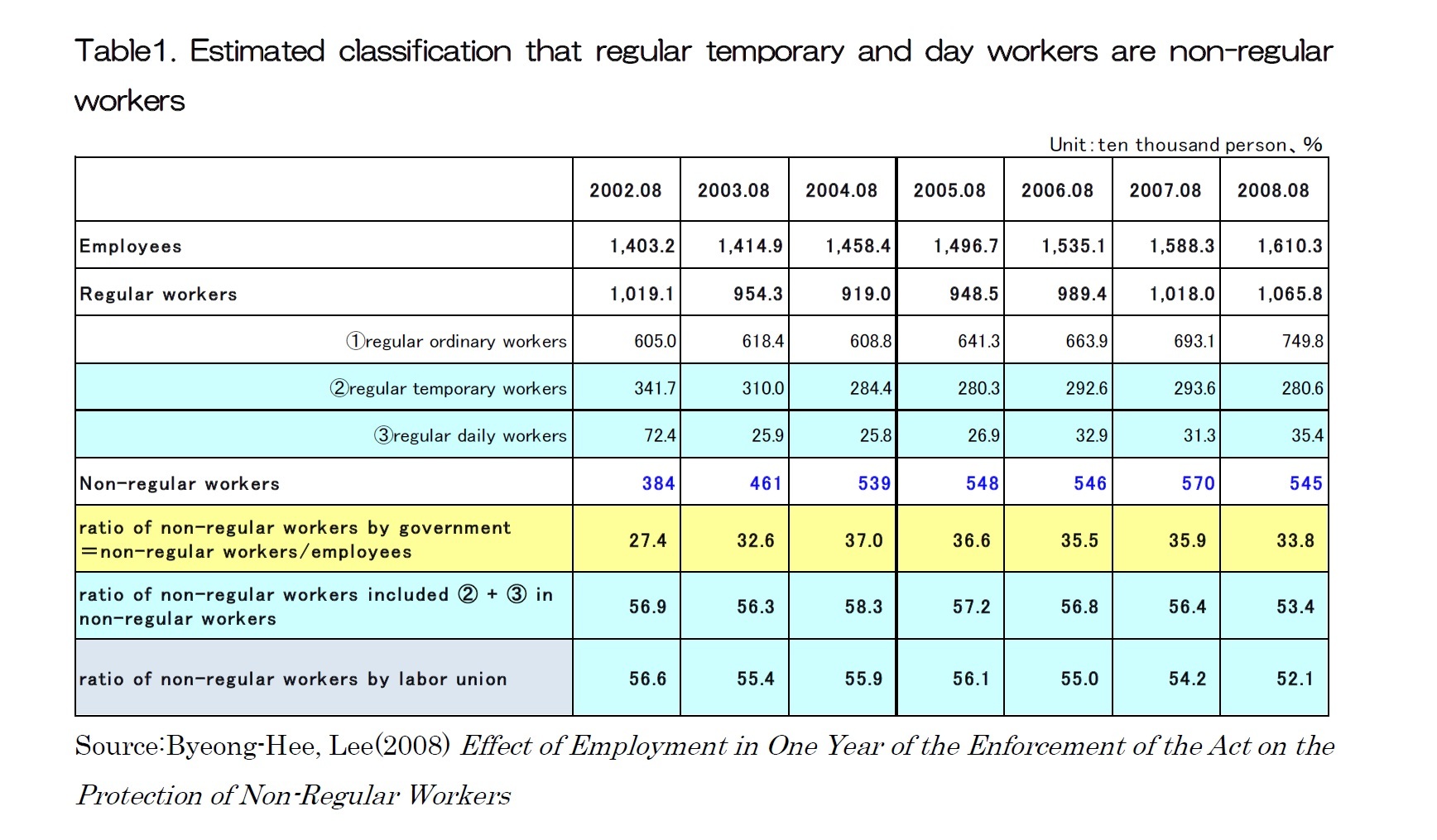
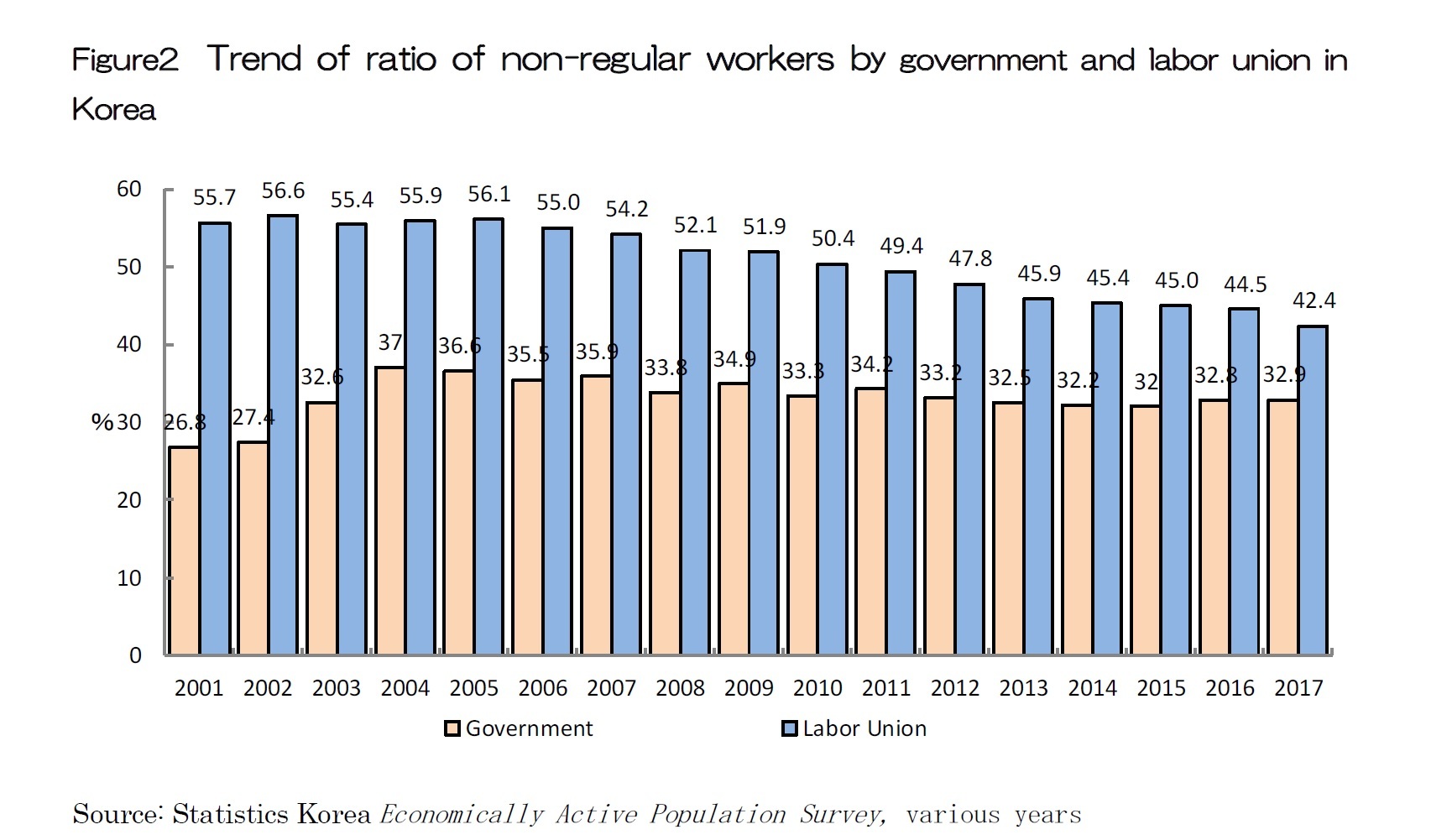
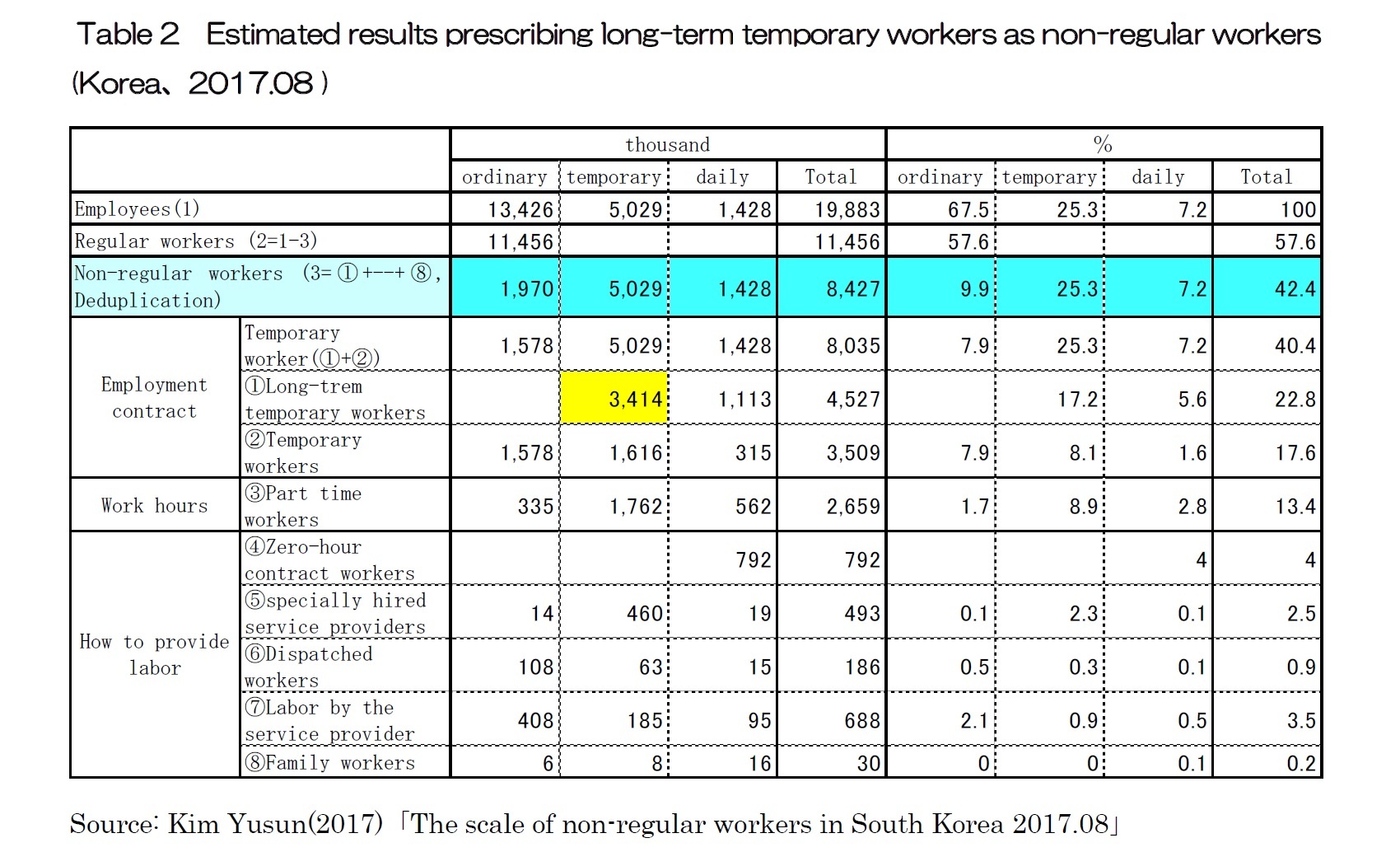
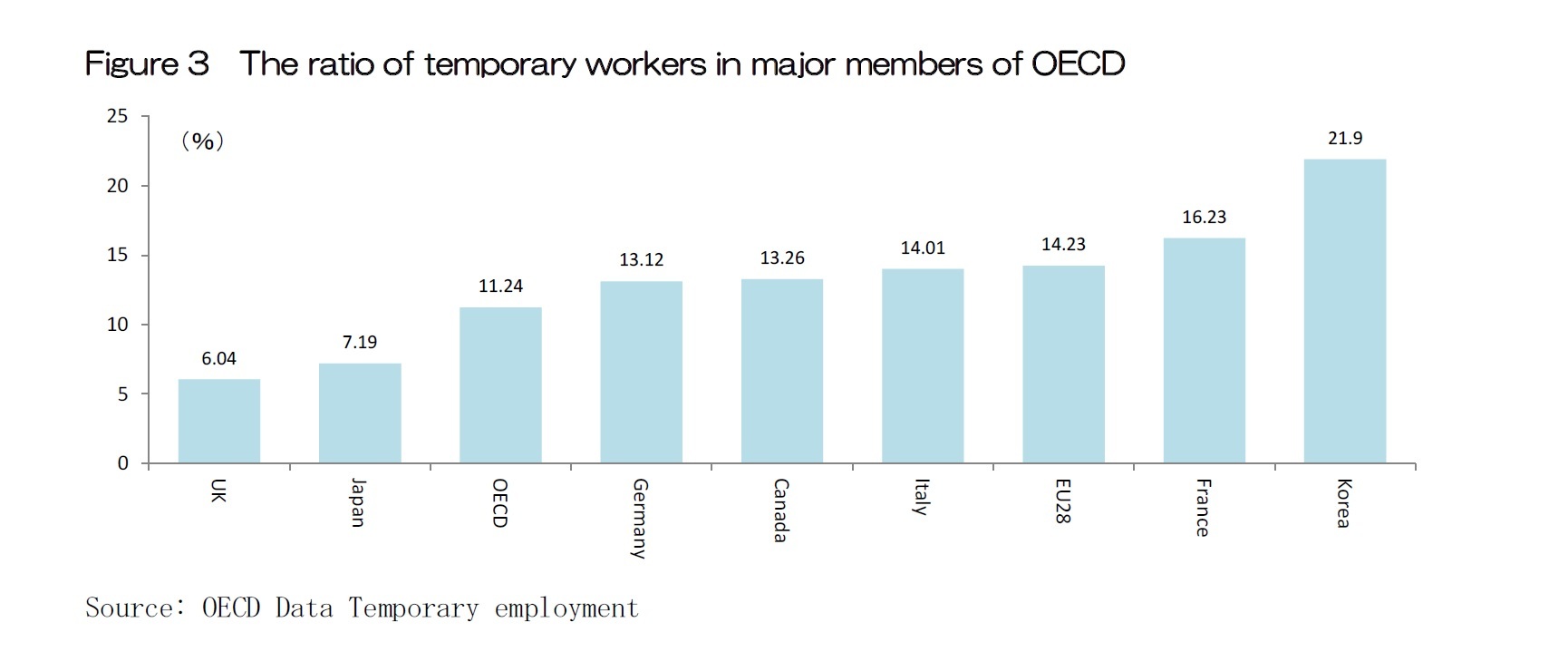

 各種レポート配信をメールでお知らせ。読み逃しを防ぎます!
各種レポート配信をメールでお知らせ。読み逃しを防ぎます!




